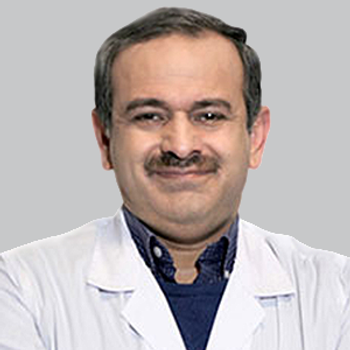
FDA Approval Process for RRMS Therapies
Gabriel Pardo, MD, FAAN, describes the process that generic RRMS medications have to go through to be approved by the FDA, highlighting the abbreviated new drug application [ANDA] process.
Episodes in this series

Ahmed Zayed Obeidat MD, PhD: Dr Pardo, what process do generics have to go through to come to market and be cleared by the FDA?
Gabriel Pardo, MD, FAAN: There is a process, you’re absolutely right. Essentially, with a generic they need to demonstrate that they have bioequivalence to the product they are trying to replace or be along with in the market. It has to do with the dosage form, safety, the strength, even the route of administration has to be the same, otherwise it would be a different type of product. Also, the quality and the intended use because you cannot do it for another indication when it has already been approved. All of that has to be done.
The FDA has a process, the abbreviated new drug application process, also known as ANDA. That is the process through which the FDA will evaluate a generic. And essentially, they do not need to do new clinical trials to prove efficacy, but they do have to demonstrate that from a pharmacokinetic and pharmacodynamic perspective, they have equivalency. It doesn’t have to be identical. There are specific perimeters, you have to be within a certain percentage for the area under the curve for the maximum concentration of the drug, things of that nature. If you demonstrate that to the FDA, then they are going to be able to bring their generic to market.
There are certainly protections in place for the manufacturers of the original product, the innovative product. Of course, this will not happen until the patent expires, and that length of time can vary or can be extended depending on certain circumstances. But once that patent time is up, it’s open for generic manufacturers to come up with a product they want to come to the market with.
Ahmed Zayed Obeidat MD, PhD: What you mentioned is they have to demonstrate the blood concentration, bioavailability in the blood, is within a certain range, whether it’s 80% to 125%. They don’t have to demonstrate efficacy or safety in MS [multiple sclerosis]. And in fact, they can do these studies with healthy volunteers, they don’t have to do them in people with MS. Dr Dukkipati will talk about biosimilars, how is that different?
Ravi Dukkipati, MD: I believe the biosimilars are a bit different, first off because of the origins. These are larger molecules that are derived from living or tissue origins, and unlike the generic, one cannot replicate, one for one, a biosimilar. The criteria for biosimilars are that these drugs have to be highly similar but not equivalent. The clinically active component has to be equivalent, but there are clinically inactive parts of a biologic agent that don’t necessarily replicate. The process is more or less similar to that of generics in that the potential manufacturer or marketer of a biosimilar does not necessarily have to replicate all the preclinical and clinical trials. But they have to show similar pharmacokinetics and bioavailability.
Ahmed Zayed Obeidat MD, PhD: They have to also demonstrate safety and efficacy within that disease state. So when we see a biosimilar, for example for multiple sclerosis, if we have any biosimilar in the future or there are some on the horizon, they have to demonstrate safety and efficacy in MS. As you mentioned, they don’t have to go through the robust clinical trial development program, but they have to demonstrate in at least 1 study or so that they have efficacy and safety. And because many of them are antibodies, do they have any antidrug antibodies that may develop that may be different? Those things are also of importance. Thanks for differentiating the 2 of those. But they’re both pathways to MS care, and that provides us with more options.
Ravi Dukkipati, MD: I think the other aspect is interchangeability. I believe generics are interchangeable for the most part, whereas biosimilars, at least the ones that have been approved thus far, are necessarily interchangeable.
Gabriel Pardo, MD, FAAN: The other added level for the biologics is immunogenicity. They need to demonstrate that aspect as well, that they are not creating a more immunogenic state compared to the original product.
Transcript edited for clarity
Newsletter
Keep your finger on the pulse of neurology—subscribe to NeurologyLive for expert interviews, new data, and breakthrough treatment updates.



































